
What parents need to know about teeth grinding or clenching in children
Teeth grinding or clenching can be a common issue among adults and children. Also known as bruxism, it is a repetitive jaw-muscle activity with thrusting of the bottom jaw (mandible) and can occur either during sleep or when awake.
In adults it can lead to many dental and muscle issues, characterised by tooth wear, gum disease, headaches and disorders of the jaw joint which can all have an impact on the quality of life.
Although in some cases, bruxism can self resolve and decline by adulthood, it is crucial to be aware of the damaging consequences it may have in the developing child.
RISK FACTORS FOR BRUXISM IN CHILDREN?
There is more controversy than consensus as to why bruxism occurs in children, however, there are a number of risk factors (these are risk factors NOT definitive causes) that seem to correlate with bruxism:
- Poor sleep patterns (sleep hygiene) and sleep disordered breathing
- Exposure to secondhand smoke
- High levels of stress
- Children with disturbances in muscular control caused by brain injuries
- Influence of emotional factors, such as having to deal with an accumulation of tasks, loss, expectations, conflict, self-image, self-esteem, and anxiety.
WHAT PROBLEMS CAN OCCUR FROM TEETH GRINDING OR CLENCHING?
It is important to speak to your paediatric dentist at MPD should you suspect your child is suffering from bruxism.
Some of the common problems that may be associated with bruxism can be:
- Tooth wear
- Poor sleeping patterns
- Frequent arousal from sleep
- Mouth breathing/loud breathing during sleep
- Challenges with waking in the mornings
- Daytime sleepiness/tiredness
- Challenges with behaviour/aggressiveness
- Headaches
If you feel your child has a bruxing habit then book an appointment to chat with one of our specialist paediatric dentists.
Examining teeth for signs of wear and conversing about your child’s sleep is part of the conversation your dentist will have with you during your initial consultation.
WE ARE HERE TO HELP AT MPD
If you have any other questions about teeth grinding or clenching then please get in touch with the team at MPD and we will be happy to help.
If your child is overdue for their next appointment give us a call on (02) 9188-0202 or book online here.
This article is intended to promote understanding of and knowledge about general oral health topics and to help begin the conversation with your children’s dentist. It should not be used as a substitute for professional advice, diagnosis or treatment. Always seek the advice of your health care professional prior to incorporating this as part of your child’s diet or health regimen.
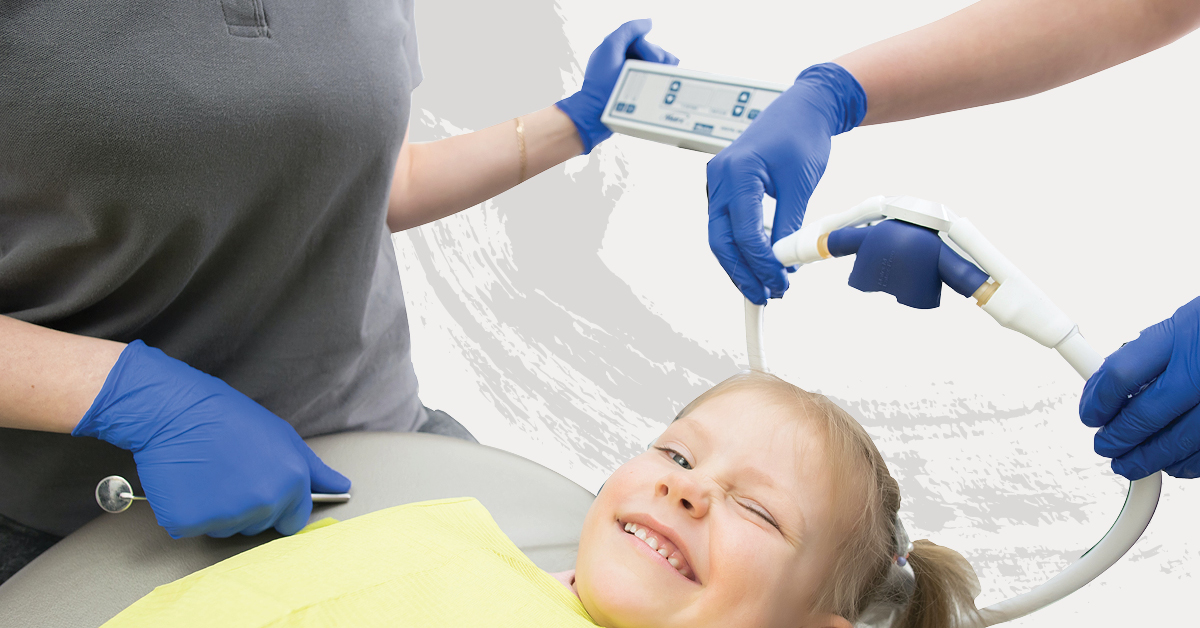
What is a pulpotomy procedure and why may your child need one?
A pulpotomy procedure usually takes place in an effort to restore a tooth where bacteria from decay has reached the nerve tissue. In some cases when a tooth has suffered trauma the nerve tissue and blood vessels (usually called the pulp) can become exposed.
Whilst baby teeth do eventually fall out, they are important to maintain until the right age. This is because baby teeth are the caretakers for the space where adult teeth will eventually grow, so it is important to ensure they remain healthy.
A pulpotomy procedure is the best option to keep your child’s tooth pain free and healthy.
WHY WOULD YOUR CHILD NEED A PULPOTOMY PROCEDURE?
If your child complains of pain when chewing foods or when eating cold, hot or sweet things, this could be a sign of inflammation of the pulp tissue also called pulpitis. This can be from bacteria in untreated cavities
At your routine dental visit your dentist will assess any teeth when examining them or by using radiographs (x-rays) for early cavities which when left untreated could lead to pulpitis, pain and extensive treatment.
An untreated cavity can destroy the outer layer of the tooth, and then affect the soft pulp inside your child’s tooth. This pulp is full of nerve tissue and blood vessels, so an infected tooth can become painful.
Teeth can also become infected from oral trauma. If your child falls and breaks or cracks a tooth, oral bacteria can get inside the tooth and cause an infection. So following a dental injury it is important to get assessed by your dentist.
If left untreated, the bacteria eventually overcome or kill the nerve tissue and cause inflammation that is irreversible.
WHAT IS A PULPOTOMY PROCEDURE?
A pulpotomy is a procedure that is performed to restore a child’s infected baby (primary) teeth.
Firstly, an examination will be conducted to determine how severe the infection is. If the pulpitis has affected the pulp in the crown, or if the removal of the decay will expose the pulp, then a pulpotomy procedure will be carried out.
A pulpotomy procedure involves the paediatric dentist opening up your child’s tooth and removing the infected pulp from the crown (the upper part of the tooth).
The pulp is usually treated with a special medication that helps protect the pulp from infection. After this, your child’s tooth will be protected with a filling or a crown (that may be of stainless steel or zirconia), and the procedure is complete.
WHAT IS THE DIFFERENCE BETWEEN A PULPOTOMY AND A PULPECTOMY / ROOT CANAL?
A pulpectomy procedure is often referred to as a “baby root canal” and while it has some similarities to an adult root canal, there are also some key differences.
If your child was to undergo a pulpectomy or root canal then all of the pulp within your child’s tooth (including the roots) would be removed and replaced with medication.
A pulpotomy’s aim is to preserve the healthy pulp tissue whereas a pulpectomy removes the pulp all together. A pulpectomy would only be performed on your child if it is discovered that they have irreversible pulpitis.
WHY ISN’T MY CHILD’S AFFECTED TOOTH REMOVED INSTEAD?
Here at Macarthur Paediatric Dentistry we do everything we can to save our patient’s tiny teeth. If your child’s tooth is beyond repair with a filling or typical dental restoration, we may advise a tooth extraction, but this is always a last resort.
The reason why tooth removal is an absolute last resort is because primary teeth help ensure that the permanent teeth will have enough space to grow when they come through.
CAN A PULPOTOMY PROCEDURE BE DONE IN THE CLINIC OR WILL MY CHILD NEED TO GO TO HOSPITAL?
Many children can undergo this procedure in the chair with laughing gas. Others may require a visit to the hospital to have it completed under a short sleep or general anaesthesia.
This depends on the individual child. However this is usually assessed at your initial consultation where we can discuss the options for treatment.
WHAT PRECAUTIONS SHOULD MY CHILD TAKE AFTER HAVING A PULPOTOMY PROCEDURE?
Pulpotomies are complex procedures but also very common. Most children do not need any pain relief and recover quite well. Some children may need paracetamol. The crown placed over the pulpotomy can feel foreign and cause some discomfort in the first 24 hours following the procedure.
REGULAR VISITS TO THE DENTIST CAN PREVENT THE NEED FOR A PULPOTOMY PROCEDURE
If a child’s cavity is picked up early enough, complex procedures can be avoided. Prevention is always the best plan when it comes to your child’s teeth and gum health.
By booking regular visits to see one of our paediatric dentists or oral health therapists we can ensure we catch any signs of infection before it develops into a problem.
If your child is overdue for their next appointment give us a call on (02) 9188-0202 or book online here.
This article is intended to promote understanding of and knowledge about general oral health topics and to help begin the conversation with your children’s dentist. It should not be used as a substitute for professional advice, diagnosis or treatment. Always seek the advice of your health care professional prior to incorporating this as part of your child’s diet or health regimen.
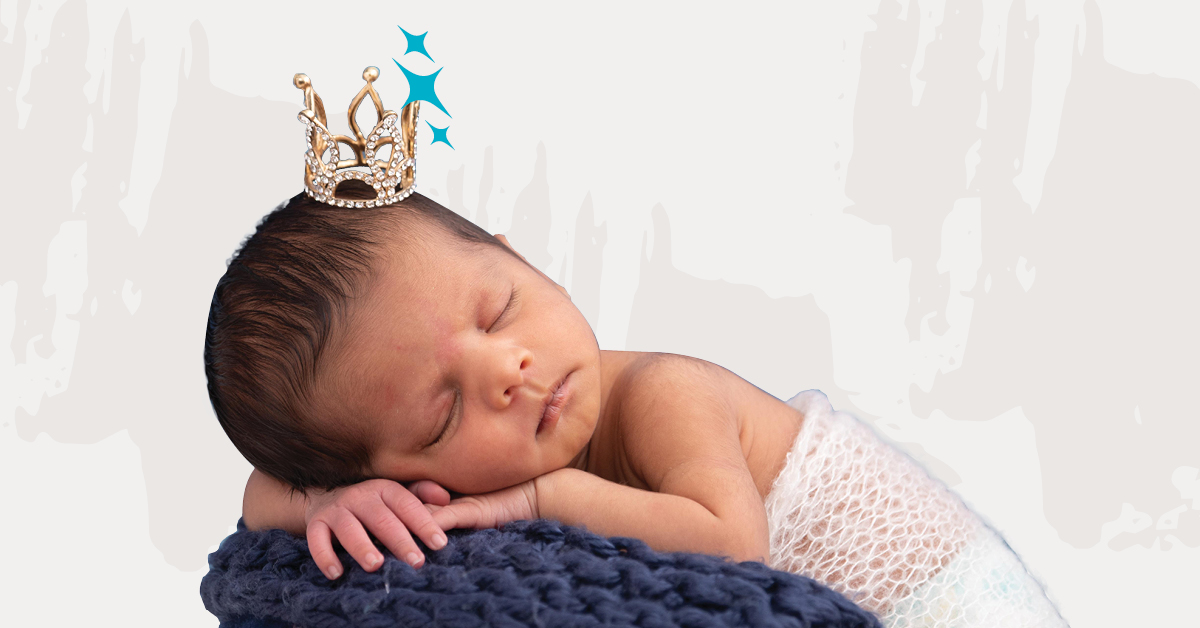
Is it safe to insert a zirconia crown on a baby tooth?
Most adults are fairly familiar with the concept of a metal or zirconia crown as a means of protecting a damaged tooth.
However, what may not be as widely known is the fact that dental crowns can – and often are – used on baby teeth for the same reasons.
It might seem odd considering baby teeth eventually fall out. But your child’s baby teeth or primary teeth play an important role in helping with their nutrition and overall growth and development. In addition, primary teeth are important to maintain space for the adult (secondary) teeth and help to maintain good dimensions of the jaws.
Having healthy baby teeth will ensure that the permanent teeth then grow into the proper position.
Treatment with a crown (either metallic/stainless steel or zirconia which can be tooth coloured) is one way to help preserve baby teeth until they’re ready to fall out naturally.
BUT WHY WOULD MY CHILD NEED A ZIRCONIA CROWN?
In some cases where a tooth is severely broken down from decay, or if there’s been a defect during enamel formation and the tooth hasn’t developed properly, your paediatric dentist might recommend insertion of a stainless steel or zirconia crown.
Think of a dental crown like a helmet for the tooth. It’s going to provide a strong layer of protection so that no further damage can be done. This helps to restore the tooth BEFORE it gets to a point where it needs significant work done, such as extraction.
ARE ZIRCONIA CROWNS SAFE FOR USE ON BABY TEETH?
Absolutely! Both stainless steel and zirconia dental crowns are completely safe to use on baby teeth that are chipped/broken, have large cavities or extensive decay, or haven’t developed properly.
When it comes to treating cavities, paediatric dentists will often prefer crowns over other treatments like fillings if the decay is so bad there is a risk of it breaking.
Some parents prefer the use of zirconia crowns as they are tooth coloured. However stainless steel crowns despite their appearance have been around for a lot longer than zirconia crowns
WHAT’S THE DIFFERENCE BETWEEN A ZIRCONIA CROWN AND A STAINLESS STEEL CROWN?
Unlike stainless steel crowns which have been used in dentistry for decades now, zirconia crowns are relatively newer to the scene. However from a strength and durability standpoint, there really isn’t a difference between the two types of crowns.
Really the key difference between a zirconia crown and a stainless steel crown is simply the material they are made from, their aesthetics and manner in which the teeth have to be prepared to place them.
Zirconia is a much more aesthetically pleasing material because it has a natural tooth colour, unlike stainless steel which is metallic.
A zirconia crown is slightly harder to prepare and can take more time than stainless steel crowns. In some cases due to the amount of tooth that is removed with zirconia crowns, your paediatric dentist may need to electively perform other procedures such as treating the nerve prior to fitting a zirconia crown.
HOW LONG WILL A ZIRCONIA CROWN LAST?
As is the case with any dental crown on baby teeth, a zirconia crown will remain in place until the tooth is ready to extract or fall out of the mouth and give way to the underlying adult tooth.
CAN ZIRCONIA CROWNS BE INSERTED IN THE CHAIR OR WILL MY CHILD NEED TO GO TO HOSPITAL?
Due to the slightly harder preparation process involved with zirconia crowns, it can be challenging to complete the procedure in the chair – particularly if a child is uncooperative or anxious.
We recommend putting your child under for a short sleep, however this is something that we will assess at the time of your initial consultation. Unlike dental crowns for adults, which can often require several visits to the dentist, most crowns for children can be placed in a single procedure.
We always make sure that we discuss all options with you, and weigh the risks and benefits based on the specific needs of your child.
WHAT PRECAUTIONS SHOULD MY CHILD TAKE AFTER HAVING A ZIRCONIA CROWN INSERTED?
Dental crowns can often feel uncomfortable and large or tight after the procedure. This sensation will improve itself within a few days to a week or so.
It is important that your child maintains a good oral hygiene practice with regular brushing twice a day and flossing once at night.
REGULAR VISITS TO YOUR CHILD’S DENTIST WILL REDUCE THE NEED FOR RESTORATIVE TREATMENTS
The best kind of plan is always a preventive one.
By booking regular visits to see one of our paediatric dentists we can ensure we catch any signs of tooth or gum damage before it develops into a problem.
If your child is overdue for their next appointment give us a call on (02) 9188-0202 or book online here.
This article is intended to promote understanding of and knowledge about general oral health topics and to help begin the conversation with your children’s dentist. It should not be used as a substitute for professional advice, diagnosis or treatment. Always seek the advice of your health care professional prior to incorporating this as part of your child’s diet or health regimen.
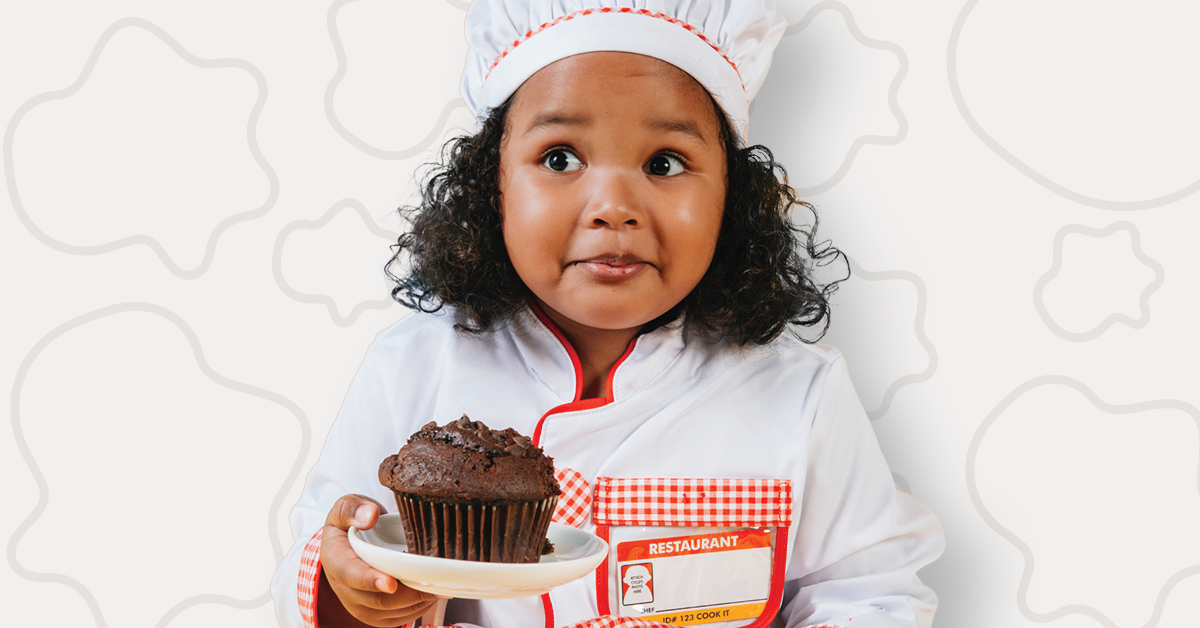
How much sugar per day is okay for kids?
With Easter right around the corner there’s no better time than to tackle some of the most common questions we get about kid’s teeth and sugar, including how much sugar per day is okay for your child to consume.
Of course we’re not going to sit here and tell you it’s a terrible thing to give your kids some Easter eggs this holiday season because let’s face it, that wouldn’t be realistic!
When we talk about oral health, we’re generally most concerned with WHAT you eat and HOW FREQUENTLY you eat it, rather than how much of it you eat at a time.
However, the thing about sugar in this day and age is that it’s popping up in so much of our pre-packaged foods, making it tricky to figure out how much sugar per day your child is actually ingesting.
Considering we’re also living in a time where one in three Australian kids aged five to six years old have already had tooth decay in a baby tooth (and this goes up to one in two for Indigenous children), it’s more important than ever we create heightened awareness around sugar, how it’s consumed, and it’s link to oral health problems.
SUGAR AND ITS LINK TO TOOTH DECAY
There are lots of different kinds of bacteria living on and around your teeth. While not all of these are bad – in fact some are necessary for healthy teeth and gums – there are certain harmful oral bacteria that love to feed on the sugars in the food and drinks we consume.
Unfortunately at the same time that bacteria is producing acid, which attacks the outer layer of the teeth known as the enamel. What happens then is that the enamel starts to dissolve and the tooth begins to weaken.
This process happens every time we digest food or drink with sugar as an ingredient, therefore speeding up the process of tooth decay. That’s why paediatric dentists can link how much sugar per day you have to your chances of developing dental cavities and decay.
THE TROUBLESOME ‘ADDED’ SUGARS
Here’s the thing about sugar though, it’s REALLY sneaky.
In fact it’s so sneaky it often disguises itself on food labels under different names. You might think you’re aware of how much sugar per day your child is having by monitoring the obvious culprits like lollies, cakes and soft drinks, but are you also able to identify what’s known as added sugars?
Added sugars are any sugars that aren’t found in whole foods like fruits, vegetables, whole grains, cheese and yoghurt. Sugar-sweetened drinks such as fruit juices, soft-drinks, cordials and flavoured milks are some of the major culprits of added sugar in children’s diets.
However, added sugars are also often found in the foods you may least expect, such as soups, sauces, breakfast cereals and muesli bars. In fact, some ‘health’ foods that you may presume to be natural can actually contain up to twice the daily recommended amount of sugar.
IDENTIFYING ADDED SUGARS
If you really want to know how much sugar per day your kids are having, you need to have a keen eye for reading nutrition labels – and you need to know what you’re looking for.
Here are the many names of sugar to look for:
- Golden syrup, corn syrup, maple syrup, rice malt syrup, date syrup
- Honey
- Dextrose, maltose, sucrose, glucose and fructose
- Raw sugar, cane sugar, invert sugar, brown sugar, molasses
- Cane juice
- Agave nectar
- Fruit juice concentrate
- Malt, malt extract
A more exhaustive list can be found here.
GUIDELINES AROUND HOW MUCH SUGAR PER DAY IS IDEAL
The World Health Organisation (WHO) recommends adults and children reduce their daily intake of added sugars to less than five percent of their energy intake, which equates to roughly 25 grams or six teaspoons of sugar per day.
Considering the high rates of baby teeth decay already and the fact that in 2017-18 one in four Australian children and adolescents aged two to 17 were overweight, identifying those hidden sugars is absolutely vital.
For example, one tablespoon of tomato sauce contains around four grams (or one teaspoon) of added sugars. That’s all it takes, four grams and that’s one teaspoon of your daily intake gone.
Remember, while what your child eats matters greatly, how much sugar per day they consume and the overall health of their teeth really comes down to repeated snacking or frequent sipping on sugary foods and drinks.
TIPS FOR READING NUTRITION LABELS
Here are some great tips from Sugar By Half to help with reading food labels so you can better limit how much sugar per day your kids are ingesting.
Start at the very beginning.
Items on a nutrition label are always listed in order from largest to smallest by weight. If one or more of the names for sugar feature towards the start of the list, that’s a sign that the product is high in added sugar.
Look out for red alert words
Words like syrup and sugar are the more obvious ones. However, anything described as crystals or concentrate is worth looking into.
And don’t forget the words that end in “ose”. Dextrose, maltose, sucrose are all added sugars.
WHAT COMES NEXT?
Now you know how much sugar per day your child should be having, how do you actually implement the change?
Well when it comes to kids and their food, it’s best to start small. Find the highest sugary food your child eats most regularly and swap it out for a healthier alternative. Slowly keep introducing them to the lower sugar options one at a time.
Alongside that, keep encouraging a good oral hygiene routine, helping them with daily brushing and flossing until they’re able to do it themselves.
And don’t forget to book regular appointments with your paediatric dentist so that they can monitor your child’s dental health and address any decay issues early.
If it’s time for your child’s next visit, you can set an appointment by calling us on (02) 9188-0202 or book online here.
This article is intended to promote understanding of and knowledge about general oral health topics and to help begin the conversation with your children’s dentist. It should not be used as a substitute for professional advice, diagnosis or treatment. Always seek the advice of your health care professional prior to incorporating this as part of your child’s diet or health regimen.
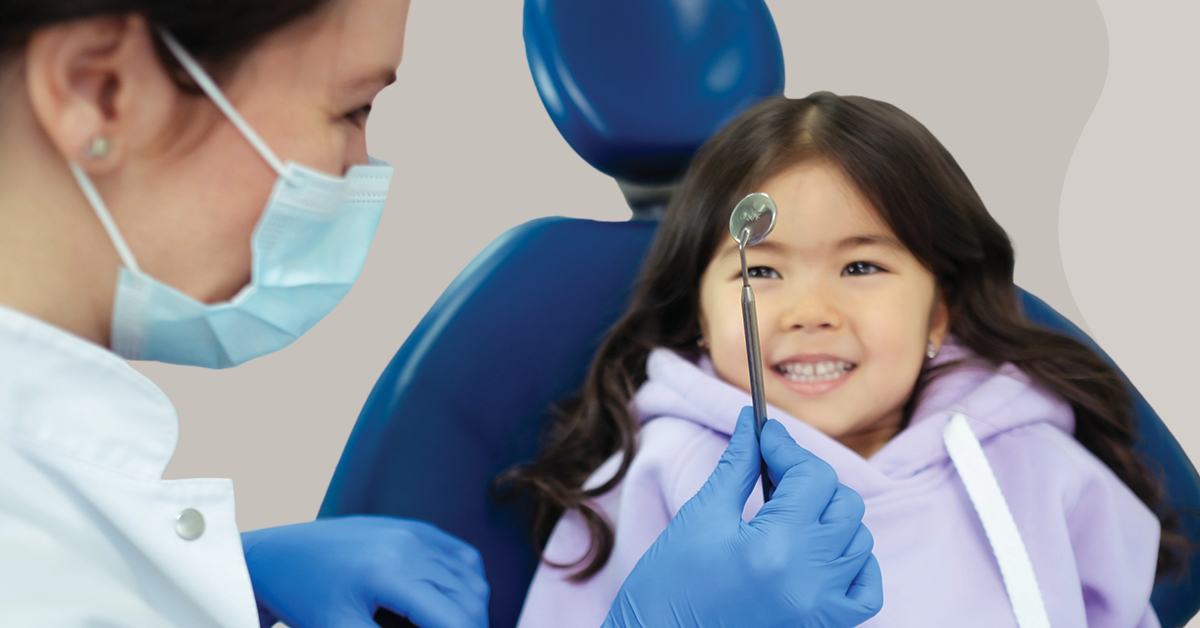
Does your child need fissure sealants?
Fissure sealants are very common in both children’s and general dentistry.
They are often recommended by a paediatric dentist if a child has a high risk of developing decay in the fissures of their teeth. As such they act as a form of early preventative care and can reduce the likelihood of oral disease significantly.
Here are some of the most common questions we get about fissure sealants:
WHAT IS A FISSURE?
Our teeth have naturally-occurring grooves on the biting surface of the tooth. These grooves are what we call ‘fissures’.
One of the most common places people get tooth decay is in fissures that are particularly deep and narrow. The issue is, while regular brushing and flossing do a great job at cleaning the smooth surfaces of our teeth, they can’t quite reach these grooves as effectively.
Over time, that allows for plaque and bacteria to build up inside those fissures and start causing some serious decay problems.
HOW DO FISSURE SEALANTS WORK?
A fissure sealant is a hard, protective covering that seals off the groove and protects the tooth. Not only does this make it easier to clean, but it helps to prevent unwanted dental cavities from forming.
They’re applied by putting the sealant in liquid form into the groove and then using a special UV light to harden it. The seal used is similar to a tooth-coloured filling, however it doesn’t require any removal of the tooth surface.
As a whole the process is very safe, quick and painless.
WHICH TEETH OFTEN REQUIRE SEALING?
Fissure sealants can be placed on any tooth that has a deep pit or groove. However they are most commonly placed on the permanent molars that come through around the age of six. Sometimes they may even be placed on the lateral incisors.
The best time to insert fissure sealants is soon after the permanent tooth has appeared, since this is when they are most at risk for decay.
Not all children need fissure sealants. Your paediatric dentist will assess your child based on factors such as their age, when the tooth is likely to fall out, and history of decay or other dental problems.
HOW LONG DO FISSURE SEALANTS LAST?
The great thing about fissure sealants is that they should last for a long time if they have been placed well and are of a high quality.
Of course there is the possibility that they may wear or chip and need replacing. If that is the case it should be done as soon as possible to ensure the tooth stays protected against decay.
Regular review appointments with your paediatric dentist will help you to stay on top of this.
DO YOU HAVE A QUESTION ABOUT SEALANTS?
The best thing you can do if you think your child may need fissure sealants is to make time to chat with their dentist.
You can book an appointment by calling us on (02) 9188-0202 or doing it online here.
This article is intended to promote understanding of and knowledge about general oral health topics and to help begin the conversation with your children’s dentist. It should not be used as a substitute for professional advice, diagnosis or treatment. Always seek the advice of your health care professional prior to incorporating this as part of your child’s diet or health regimen.
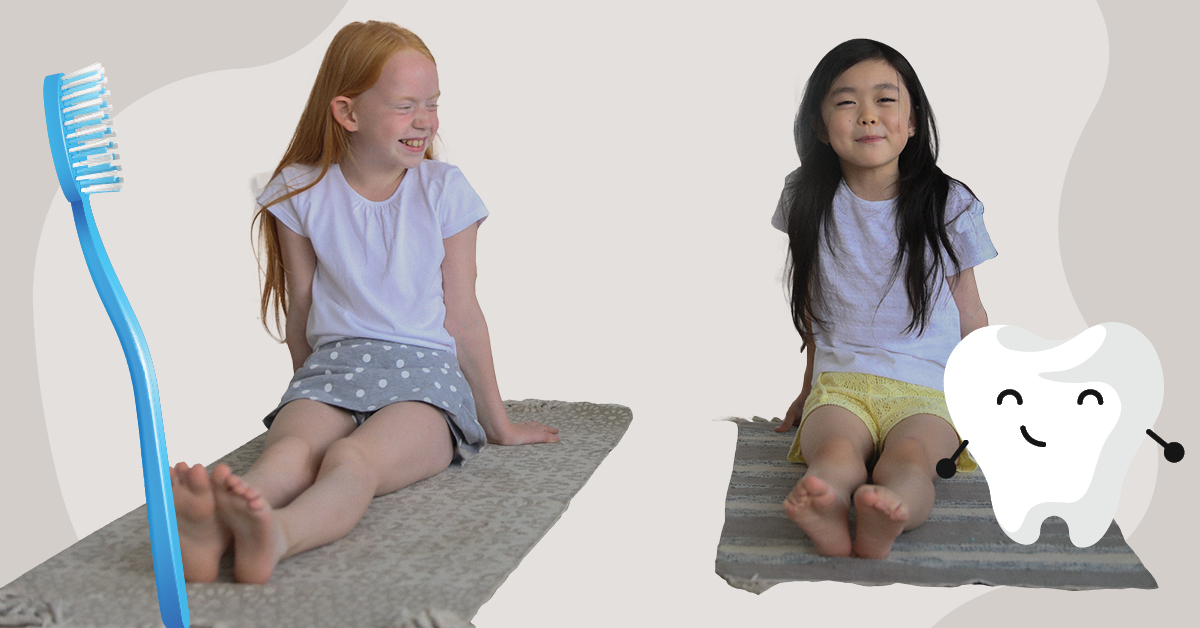
Six simple steps to achieve healthy teeth for life
There are a lot of reasons why striving for healthy teeth is worth your time – and it’s not just because you’ll have a killer smile to show for it!
Practicing good oral hygiene is the best way to ensure you steer clear of any major dental disasters down the track, and it’s great for your overall health.
At Macarthur Paediatric Dentistry we like to teach kids from a young age the importance of preventative care so that they can have healthy teeth for life. Here are six simple steps that you can help implement at home to ensure everyone in your family maintains a winning smile:
BRUSH MORNING AND NIGHT
The foundation for healthy teeth is consistently brushing twice a day for a full two minutes each time.
You should aim to start helping your child brush their teeth as soon as their first baby tooth comes through. Not only is this beneficial in starting good habits early, but it helps prevent the risk of decay or other dental problems that can sometimes have lasting impacts.
At your child’s first dental appointment your paediatric specialist will show you exactly how to clean those tiny baby teeth. Once they grow a little bigger, you’ll then be able to switch to a small headed brush with soft bristles.
There are a lot of ways you can make the practice of brushing far more engaging for your little one and by extension the whole family. Try putting on a song and setting a timer for two minutes to combine your brushing time with the ultimate dance party!
USE A FLUORIDE-BASED TOOTHPASTE
Fluoride is an abundant and naturally-occuring mineral found in things like our tap water – and it’s great for promoting healthy teeth! How exactly?
Well it helps to make the outer layer of your teeth (your tooth enamel) more resistant to acid attacks that cause tooth decay and helps to repair weak spots in the teeth before they become cavities! You can learn more about fluoride on our blog here: A parents quick guide to fluoride.
One your child reaches 18 months, your paediatric dentist may recommend they start using a low-fluoride toothpaste. As they grow, they’ll likely switch to a paste that has a higher concentration of fluoride to better protect their adult teeth.
Of course some children are more at risk of decay than others, and as such your family dentist should be consulted before making any changes to their toothpaste.
FLOSS, FLOSS, FLOSS
We can’t rely solely on brushing to properly foster healthy teeth and gums – we also need to floss!
When you don’t floss you’re missing nearly half of the surface area of your teeth – this is backed up by the Australian Dental Association. That’s because a toothbrush can’t get between the teeth or under the gumline like floss can.
Flossing daily is essential to remove plaque from these hard to reach places, especially because if we let buildup happen we’re more at risk for tooth decay, gum disease and bad breath.
We recommend getting your child into the habit of flossing once a day from a very young age so that they feel comfortable maintaining that as part of their oral hygiene routine once they hit adulthood.
HEALTHY TEETH NEED WATER
We don’t think water gets enough credit for everything it does to keep our smiles sparkling, especially when it has to compete with supermarkets full of unhealthy alternatives.
Soft drinks, fruit juices and cordials are a popular choice among kids, but it’s important to remember these drinks are highly acidic and packed full of sugar – meaning they can do a lot of damage to healthy teeth.
Water on the other hand cleans your mouth with every single sip! Not only does it wash away leftover residue and food that cavity-causing bacteria thrives on, but it also dilutes the acid produced by that bacteria in your mouth.
Encouraging your child to drink water consistently throughout the day will ensure they provide the best protection for their teeth and stay hydrated so that their body can continue functioning properly.
EAT A WELL-BALANCED DIET
Our overall health and wellbeing are connected a lot to the foods we eat, and our diet can particularly impact the state of our teeth.
We know for instance limiting sugar is best for our child’s dental development, but making sure they’re also getting a nutrient-rich diet is vital for promoting healthy teeth and gums. That means having a good balance of vegetables, fruits, proteins, grains and dairy.
If your child is going to have a sugary treat, have them eat it at the same time as a main meal instead of letting them snack throughout the day. Then make sure they wash everything down with a big glass of water!
For healthier snack alternatives try:
- Cheese cubes and apple slices
- Carrot sticks with hummus
- Hard-boiled eggs
SCHEDULE ROUTINE DENTAL VISITS
Finally, one of the very best things you can do to encourage healthy teeth for life is to keep on top of your routine dental visits.
Regular check-ups and a professional clean will help to prevent the onset of any major dental issues and help us to stay on top of any pre-existing conditions.
Your child’s dentist will always discuss with you what your appointment schedule should look like. While it’s common to book a visit every six months, at Macarthur Paediatric Dentistry we make sure to take into consideration the risk factors for each patient. That’s why some will come and see us every three months, while others will only come once a year.
It’s not difficult to maintain healthy teeth as long as you start these good habits early on in your kid’s life.
If your child is almost due for their next check up, you can make a booking by calling us
on (02) 9188-0202 or going online here.
This article is intended to promote understanding of and knowledge about general oral health topics and to help begin the conversation with your children’s dentist. It should not be used as a substitute for professional advice, diagnosis or treatment. Always seek the advice of your health care professional prior to incorporating this as part of your child’s diet or health regimen.
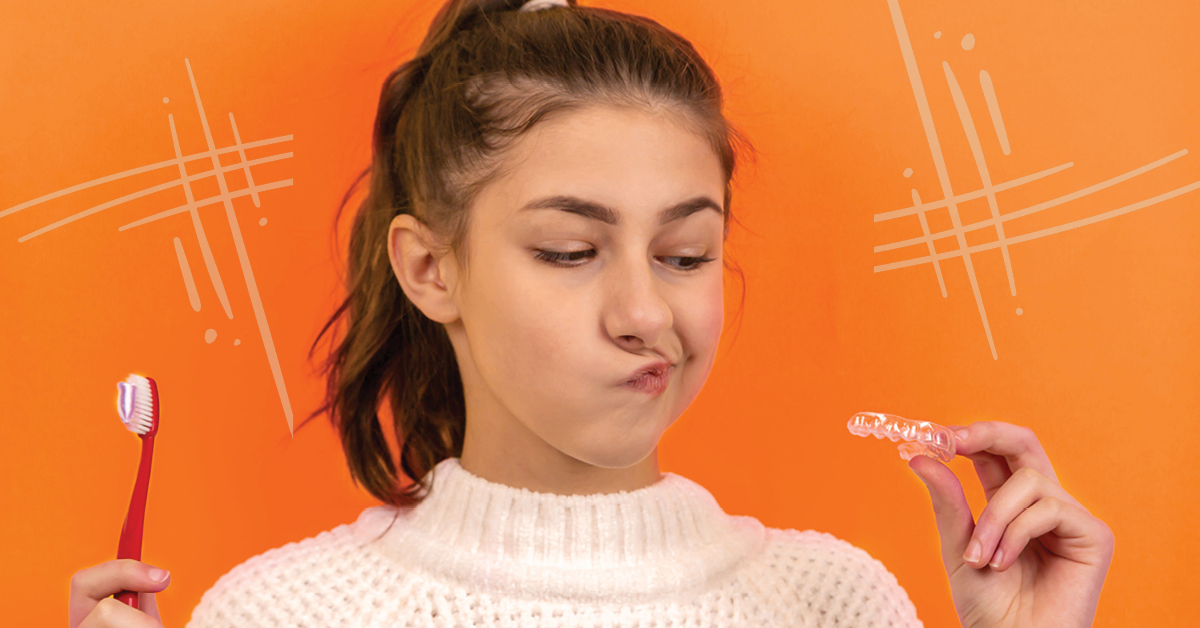
The surprising bad dental habits your child needs to break in 2022
Encouraging a good oral health care practice for your child should begin as soon as those baby chompers come through! The earlier you start, the less likely it is they will develop bad dental habits later on in life.
Having your little one keep a consistent brushing and flossing routine, limiting highly acidic or sugary foods, drinking water with every meal, and seeing a specialist paediatric dentist regularly is absolutely the best foundation for tiny teeth.
However, we also need to be conscious of any supplementary dental habits your child may develop which can be more harmful for their teeth than you might realise.
Here are some of the surprising bad habits that you should encourage your child to break in 2022:
CHEWING ON PENS OR PENCILS AT SCHOOL
Once your kids go off to school they may pick up the pesky habit of chewing on their pens or pencils throughout the day. Most children eventually grow out of it, but that doesn’t mean it should just be ignored.
For one, it can introduce all kinds of bacteria into the mouth which could include certain viruses that are floating around the schoolyard.
On top of that, chewing on hard, everyday objects can wear down the tooth’s surface. If your child has already undergone major dental work like fillings or crowns, then the damage can be even more significant.
Encourage your child to leave the 2b pencil where it belongs – out of the mouth and on the page.
BITING THEIR FINGERNAILS
Bad dental habits aren’t exclusive to kids – this one is also a big culprit amongst adults!
While biting fingernails is incredibly common, it’s definitely no good for those little teeth. In fact children who like to nibble on their nails have a higher chance of chipping or damaging a tooth.
It also puts them at greater risk for developing bruxism, an unintentional teeth grinding and clenching habit that can cause other dental health issues.
Chewing on nails can also lead to the spreading of unwanted bacteria into the mouth, considering children are fairly unlikely to wash their hands carefully before biting.
FORGETTING TO WEAR THEIR MOUTHGUARD DURING SPORT
Some bad dental habits can lead to physical trauma of the teeth or mouth. Not wearing a mouthguard when playing sports – particularly those that involve body contact, falls, or flying equipment – is one common example.
Mouthguards generally cover the upper row of teeth but are designed to protect the whole mouth including the soft tissues in the gums.
If your child forgets to wear their mouthguard – or even refuses to – it can leave them vulnerable to an injury that could have long term impacts on their dental development.
If your little one avoids using a mouthguard because it falls out when talking, or impacts their breathing or speech, then they probably don’t have one that’s properly fitted. Custom-made mouthguards consistently offer the best fit and protection for growing teeth.
USING TEETH TO OPEN THINGS THAT AREN’T FOOD
Teeth are tools made for chewing on food, but sometimes people think they’re also an alternative for using scissors!
It can be very damaging for your kids to use their teeth to open up plastic packaging, rip off sticky tape, or undo a bottle cap. Not only could they crack or chip a tooth, they could also cut their gums in the process!
Your child will often watch the way you take care of yourself on a day-to-day basis, so if they see you using your teeth as tools they might think it’s okay for them to do too.
PUTTING OFF THE DENTIST
Bad dental habits are easier to break when your child is regularly seeing their paediatric dentist.
Your little one should have had their first dental appointment by their first birthday, or no longer than six months after they get their first teeth. Based on the advice of the dentist, your child should then have regular visits every three, six or 12 months.
Even if you think your kids’ teeth look fine, it’s vital you keep up with consistent appointments to ensure their dental development is monitored and any problems that arise can be addressed early on.
If your child experiences anxiety about going to the dentist, check out our tips on how to help them overcome this fear.
SAY GOODBYE TO BAD DENTAL HABITS IN 2022
The best way to kick bad dental habits is to help your little one establish good oral hygiene practices early on, while also explaining to them in simple terms how important it is that they protect their teeth every day.
If you have concerns about your child and are unsure how to help them break any bad dental habits they’ve formed, make sure to raise this with your paediatric dentist at their next visit. If you’re yet to make an appointment for the new year, give us a call on (02) 9188-0202 or book online here.
This article is intended to promote understanding of and knowledge about general oral health topics and to help begin the conversation with your children’s dentist. It should not be used as a substitute for professional advice, diagnosis or treatment. Always seek the advice of your health care professional prior to incorporating this as part of your child’s diet or health regimen.

Xmas tips revealed! How your kids can maintain healthy teeth over the holidays
Helping your child maintain healthy teeth during the Christmas period seems like an impossible challenge with all the lollies, chocolates and sweet desserts…oh my!
However neglecting good oral health practices over the holidays can have more of a lasting impact than you think. With more exposure to sugary and acidic foods, children are at a much higher risk for developing tooth damage and decay.
Thankfully there are ways you can be more mindful of both your kids’ and your own dental hygiene during the silly season. Here are four easy tips to ensure you’ll maintain great oral health over Christmas.
KEEP A CONSISTENT DENTAL ROUTINE
Oral hygiene often tends to slip over the Christmas season as everyday routines are replaced with family catch ups, time away, and the excitement of those new toys your kids refuse to put down.
Of course a lot of the holidays are centered around food, and it’s likely your little one will be snacking on things they don’t normally eat in their regular diet.
That’s why it’s important to be even more diligent with their dental habits around this period. No matter where you are, make sure your child brushes twice a day, morning and night, and flosses once daily based on the direction of your paediatric dentist.
Fluoride is also a necessity for healthy teeth, so check too that you’re using the right toothpaste for your child. Read our guide here.
BE SMART ABOUT SUGAR INTAKE – EVERYTHING IN MODERATION!
We’re absolutely not here to be the Grinch and tell you to keep your kids away from the sugar at Christmas – hey, we’re excited for some chocolate bars and pavlova too!
However if you want to reduce the chance of cavities then it’s important that you talk to your kids early about eating those special treats in moderation.
A major contributing factor to tooth decay is the frequency of which we consume foods that are highly sugary or acidic. We’re lucky that our own saliva is one of our most powerful natural defenses against enamel damage (as it helps to wash away food particles in our mouths after we eat), but we have to give it enough time to do its job!
We suggest steering clear of frequent snacking and instead opting to have these types of foods during main meal times.
Remember too that water is one of your best pals for healthy teeth, so instead of handing over a juice, soft drink or cordial to your kids to wash down their food with, choose a glass of water instead!
OPT FOR SWEETS THAT AREN’T SUPER STICKY
We know some of the most beloved Christmas candies fall under this umbrella and you’re probably hard pressed not to find candy canes, lollipops, or toffees at Nana’s house! But not all lollies are made equal!
In fact as a general rule the stickier the lolly is, the worse they tend to be for teeth! That’s because these types of sweets leave a sugary residue on the surface of your teeth for much longer periods of time, which then gives the bacteria in your mouth more opportunity to destroy the outer enamel.
If you are going to gift lollies to your kids’ this Christmas, try and find ones that are sugar free and easy to chew! Better yet offer up healthier snack alternatives with things like cheese, yoghurt or carrots with dip.
GIVE THEM TOOTH-FRIENDLY CHRISTMAS GIFTS TO CREATE EXCITEMENT
It can be hard trying to get kids enthused about their oral hygiene, but unwrapping a cool new gadget from the stocking can certainly help!
There are lots of tooth-friendly gifts you can get your little one this Christmas that will help create a sense of fun in their dental routine or educate them on the importance of brushing and flossing.
We’ll be sharing our top picks of stocking stuffers all this month on our Instagram page, but here are a few ideas to get you started:
- A dental-related picture book, like “Does the Tiger Go to the Dentist?” by Harriet Ziefort
- A toothbrush case with stickers to decorate it with
- A tooth fairy pillow
- A new toothbrush in their favourite colour or with their favourite movie character on it!
IT’S POSSIBLE TO ENCOURAGE HEALTHY TEETH AT CHRISTMAS
It can be tempting to give your child lots of treats over the holidays, but long term it can wreak havoc on their teeth. After all, you don’t want to be visiting your child’s dentist in January only to find out they have a cavity or two.
The best ways to minimise risk and protect your kids’ healthy teeth is by remembering these three things:
- Everything in moderation
- Frequency of snacking matters
- Keeping up a good oral hygiene routine will make a world of difference
Post holidays make sure to book your child in for an appointment with their paediatric dentist to ensure they go into 2022 with happy, healthy teeth. Give us a call on (02) 9188-0202 or book online here.
This article is intended to promote understanding of and knowledge about general oral health topics and to help begin the conversation with your children’s dentist. It should not be used as a substitute for professional advice, diagnosis or treatment. Always seek the advice of your health care professional prior to incorporating this as part of your child’s diet or health regimen.

What you need to know about child tooth extraction
Here at Macarthur Paediatric Dentistry we do everything we can to save our patients’ tiny teeth if they have been heavily impacted by decay or infection before we consider child tooth extraction.
In the event that your child may have a tooth that is beyond repair with a filling or typical dental restoration, we may advise that they have the tooth removed – however this is always a last resort.
FACTORS WE CONSIDER BEFORE CHILD TOOTH EXTRACTION
Level of pain
If the tooth is already badly infected or abscessed it can cause severe pain. In some cases this can snowball into more severe problems like facial swelling and systemic infections. Serious tooth pain should never be ignored.
How long the tooth has been in the mouth
Prior to tooth extraction we need to assess the lifespan of the tooth. If it’s unlikely to stay in the mouth for a long time then it may not be worthwhile having your child go through an extensive and potentially traumatic procedure.
Age and attitude
Your child’s age and their temperament will also play into the decision for tooth extraction, especially if they’re fairly young. In some cases extensive restoration may be a better option, however we want to ensure your little one doesn’t create a fear around going to the dentist because of those treatments.
IF IT’S A BABY TOOTH, WON’T IT JUST FALL OUT ANYWAY?
While it’s true that baby teeth will fall out between the ages of about 6 to 13, an extensively decayed or traumatised tooth will not necessarily fall out on its own.
In fact, sometimes when they become infected they can remain in the mouth long enough to cause localised infection, pain, and eventually affect the developing adult teeth. Naturally it’s important to try and save baby teeth as they help to hold space for the adult teeth to come through, but if a tooth is damaged to the point above, it’s better to be extracted.
ARE THERE LONG TERM EFFECTS OF EXTRACTING BABY TEETH?
As an extensive dental procedure there are long term effects to extracting baby teeth. One of the main issues is tooth movement, where a loss of space for the developing adult teeth underneath is reduced.
There are solutions to help hold the space open such as inserting space maintainers, or in some cases you can regain that space in the future through orthodontic treatment.
Of course there are a number of ways we go about treating our little patients, so if you’re worried that your child is too young for tooth extraction it’s best to talk to your paediatric dentist who will assess the situation during your initial visits.
HOW ARE CHILD TOOTH EXTRACTIONS PERFORMED?
The technique to perform child tooth extractions hasn’t changed in years and is a far gentler process than you may initially think – particularly in kids.
Your child will be quite numb so they won’t feel any pain, just some slight pressure. We find that our little patients are often fine with the extraction itself, but take a bit of time getting used to the numbness or lack of sensation afterwards. Thankfully, that feeling will only last a few hours after the procedure.
WHAT DETERMINES IF MY CHILD HAS THEIR TOOTH EXTRACTED IN THE CHAIR OR IN HOSPITAL?
This is based on a range of factors that your child’s dentist will discuss with you. We will consider things like:
- How many teeth need to be treated
- Your child’s cooperative ability
- Whether it’s a baby tooth or an adult tooth
- Their medical history and background
WHAT ARE THE RISKS FOR BOTH?
Child tooth extraction in the chair
Treatment in the chair is done with nitrous oxide – also known as ‘happy gas’. Nitrous is incredibly safe and will help your child feel calm during the procedure; you can read our blog on happy gas here. For a child who is known to be a bit squirmy or wriggly, this should help to relax them throughout.
There are a few situations where your child’s dentist may avoid using nitrous oxide which will be discussed with you prior. In this case, they may opt to use a general anaesthesia instead.
Child tooth extraction in the hospital
More difficult extractions may be performed in the hospital under general anaesthesia, however complications still remain quite low. General anaesthesia is relatively safe and can be given to children of all ages, including newborns.
We work closely with paediatric anaesthetist’s whose role is to ensure your child is comfortable and pain free. The anaesthetist will stay with your little one at all times during the operation and monitor them closely.
In Australia and New Zealand, specialist paediatric anaesthetists are among the world’s most highly trained doctors, having spent years undergoing training in anaesthesia, pain control, resuscitation and managing medical emergencies.
HOW SHOULD I DISCUSS TOOTH EXTRACTION WITH MY CHILD?
As adults, how we communicate with our kids about dental procedures can have an impact on how they cope with it when the time comes.
Words create imagery for most children, so the use of expressions like ‘ripping teeth’, ‘extracting teeth’ or ‘needles and injections’ are a big no-no at our practice. Instead, we will talk to our little patients about the process using simple phrases which we refer to as the ‘narrative’.
It’s important that you maintain the narrative at home to help your child feel more comfortable and at ease.
HOW DO I LOOK AFTER MY CHILD POST TOOTH EXTRACTION?
This will be dependent on your child’s case and how the extraction was performed. We will walk you through in detail what you should do after the procedure during your initial visit, covering things like pain relief and management, types of foods to eat after, and how to care for the extraction site.
Your little health hero will have been very brave to undergo a tooth extraction, so expect there to be a lot of requests for ice cream!
If you’re concerned that your child may require a tooth extraction the first step is to make an appointment with a paediatric dentist. Give us a call on (02) 9188-0202, email us at hello@macpd.net.au or book online here – no referral necessary!
This article is intended to promote understanding of and knowledge about general oral health topics and to help begin the conversation with your children’s dentist. It should not be used as a substitute for professional advice, diagnosis or treatment. Always seek the advice of your health care professional prior to incorporating this as part of your child’s diet or health regimen.
